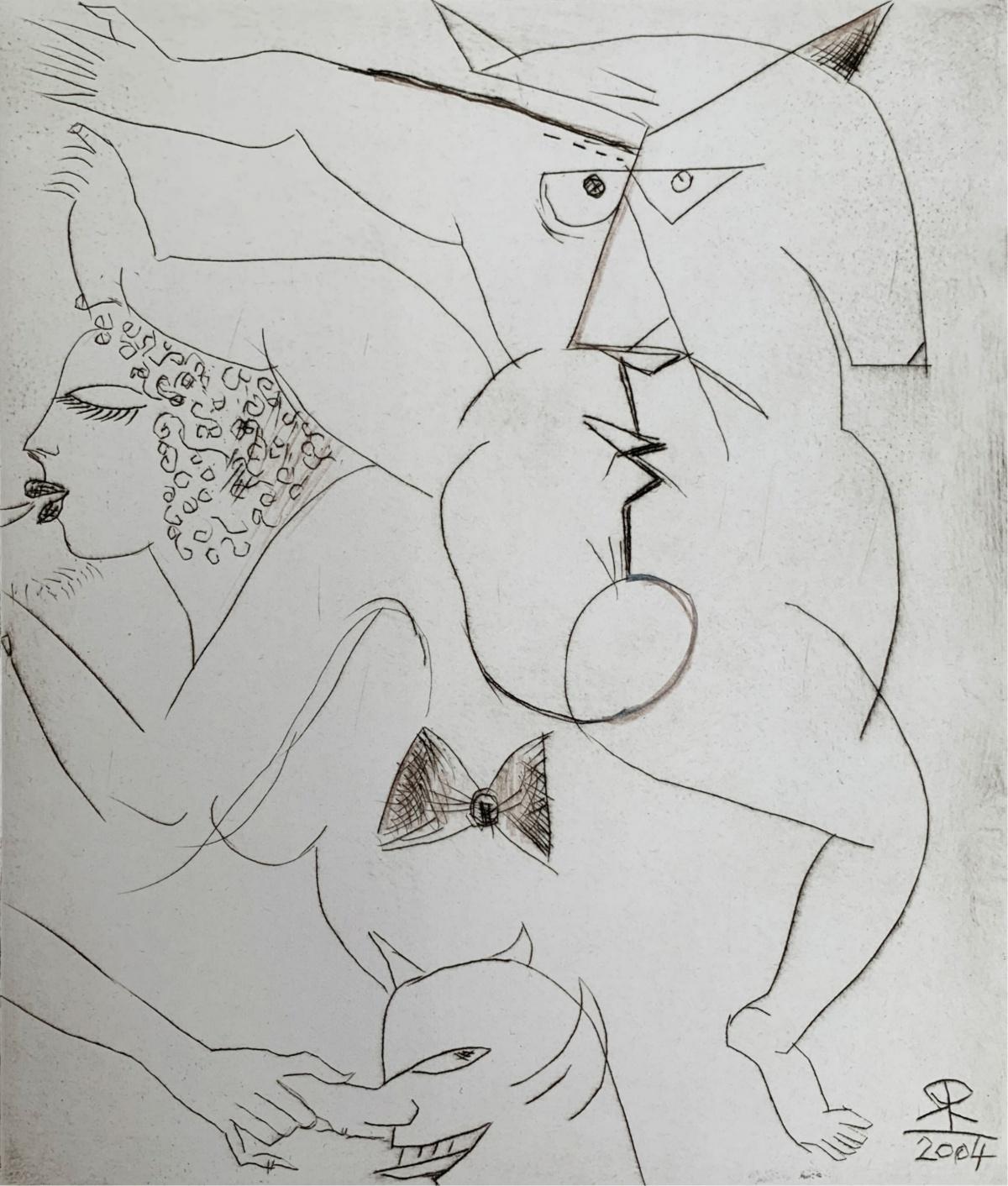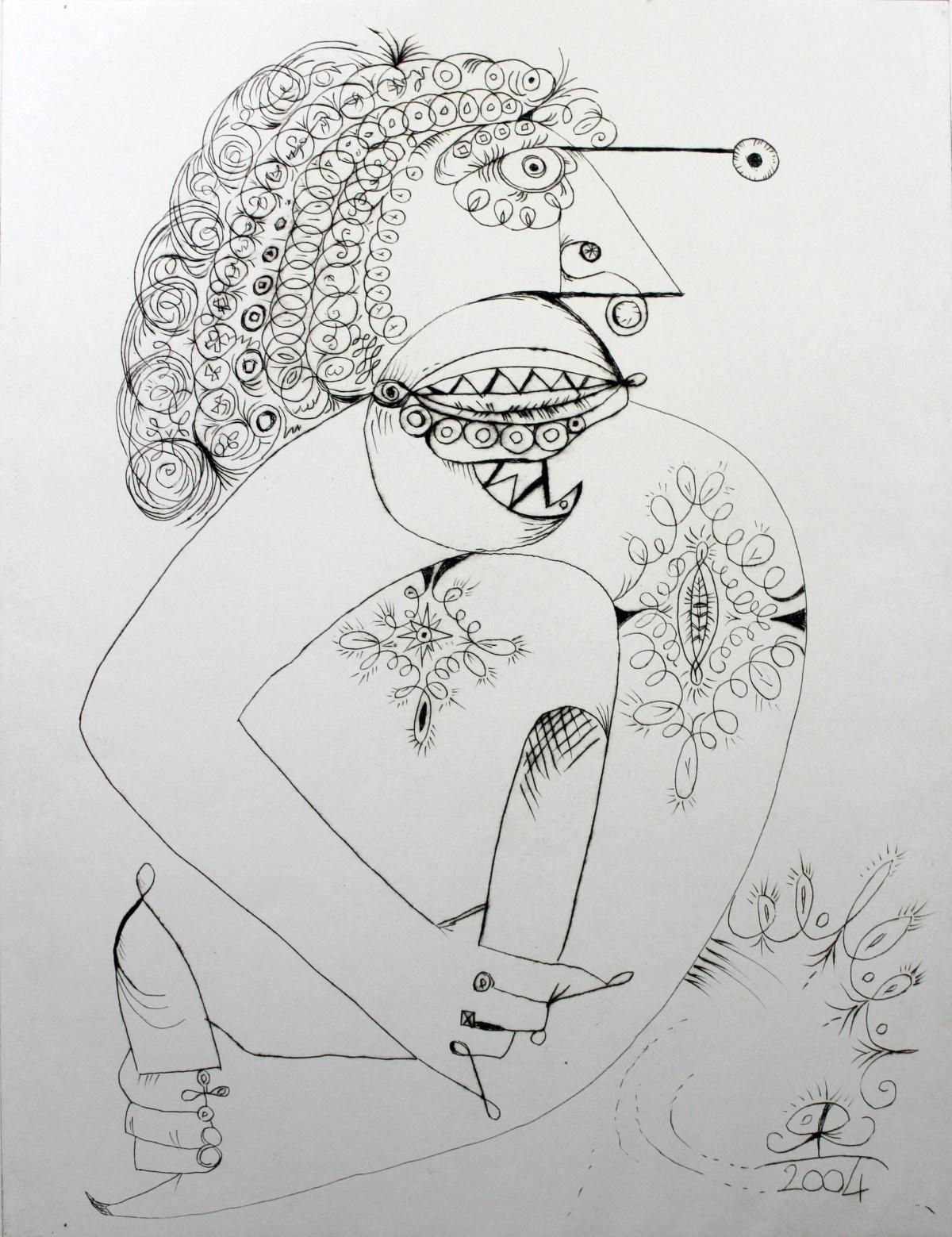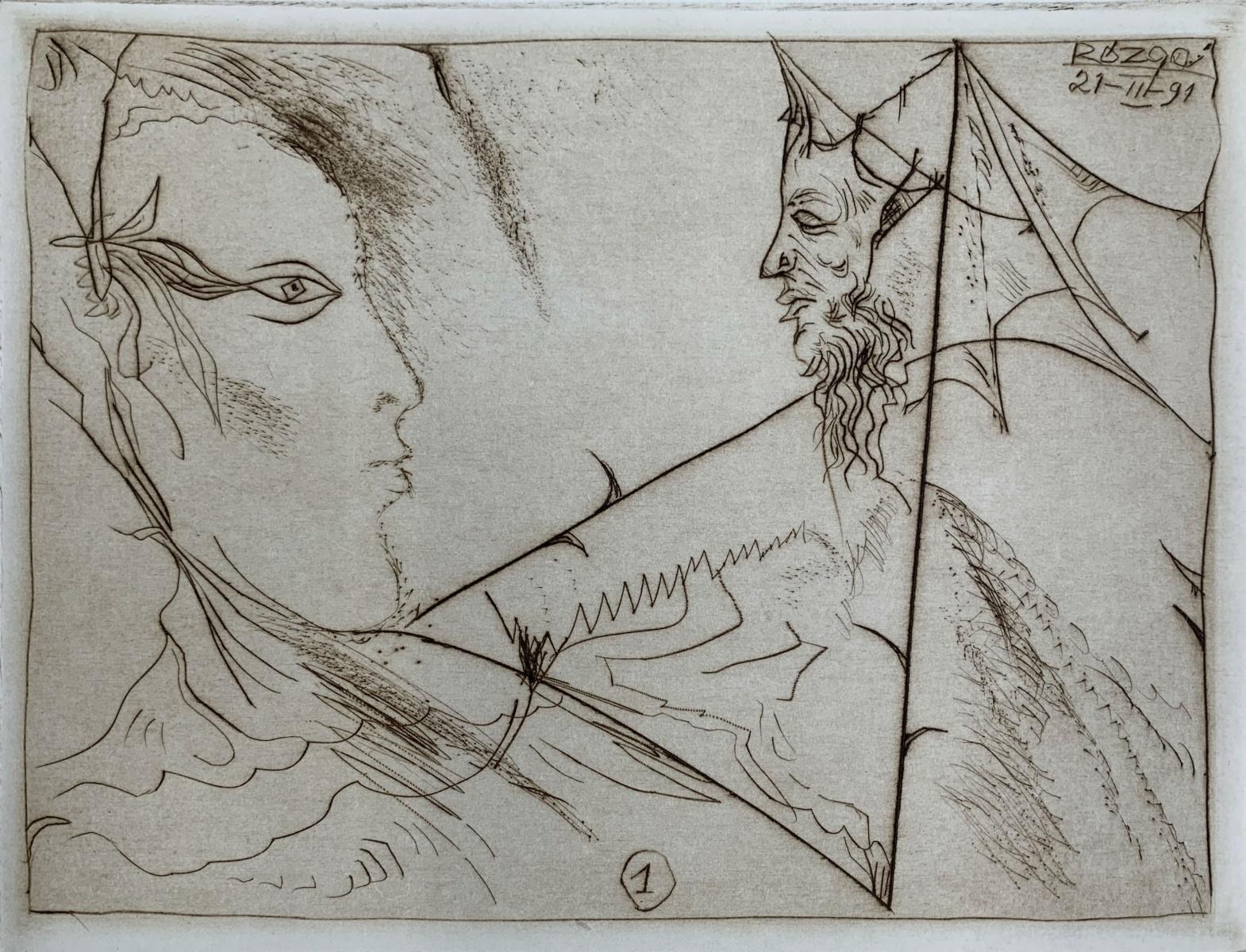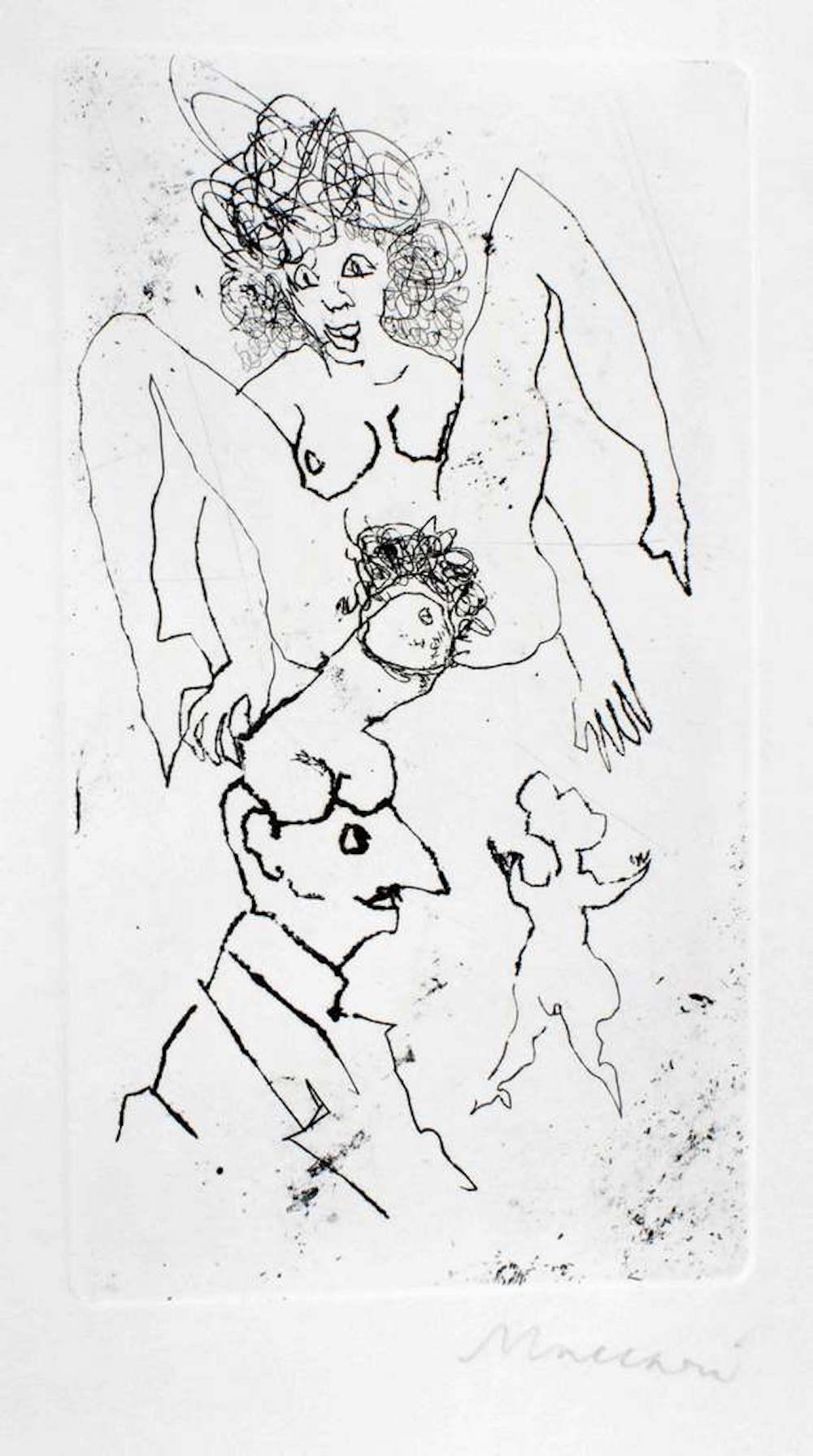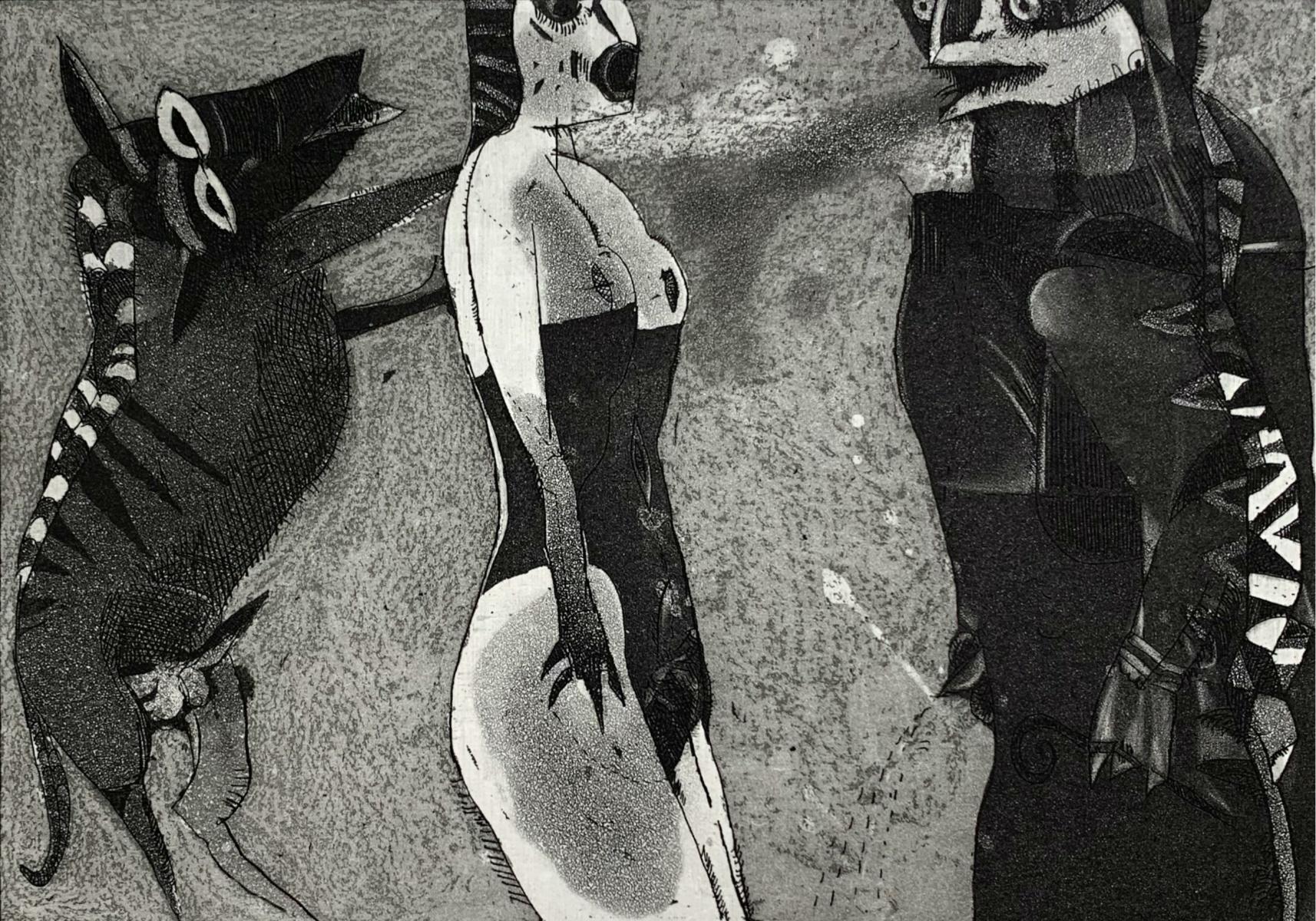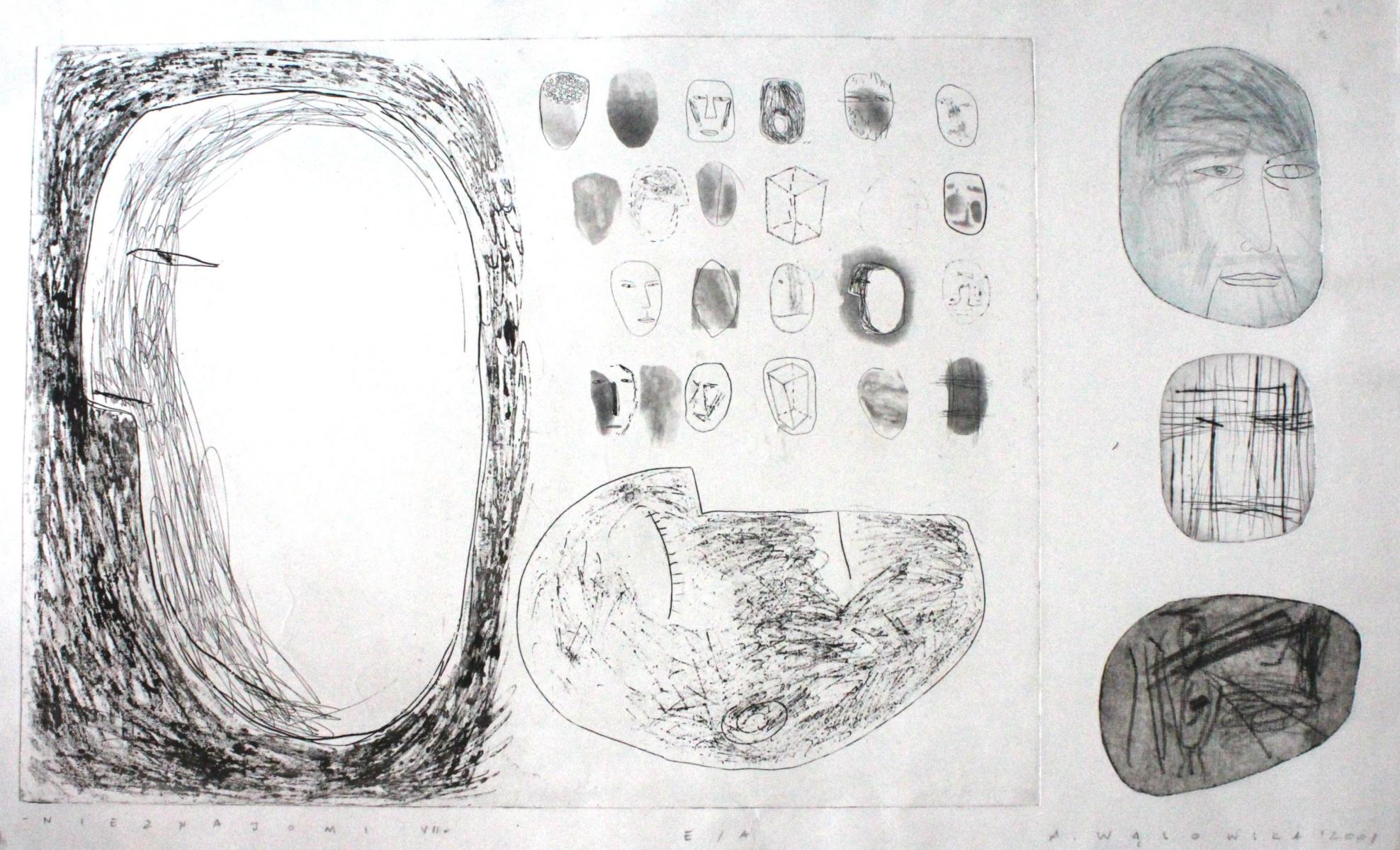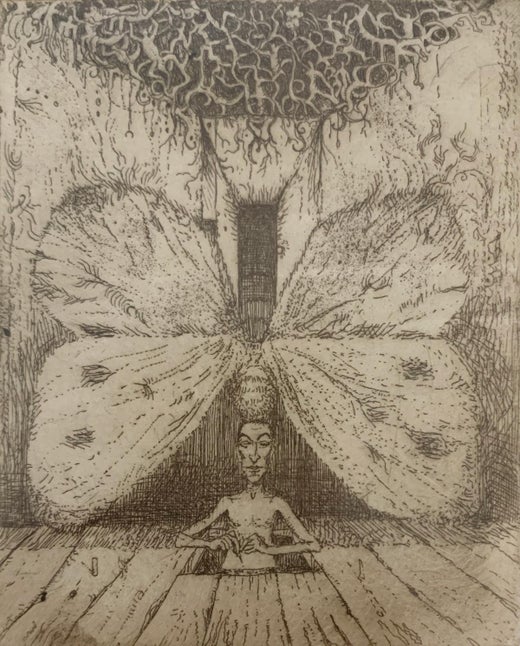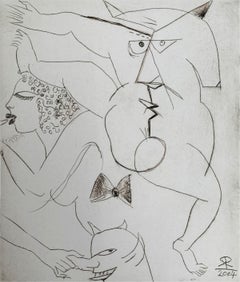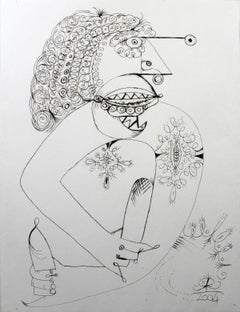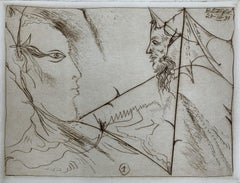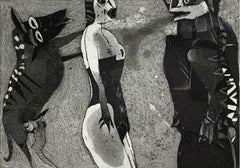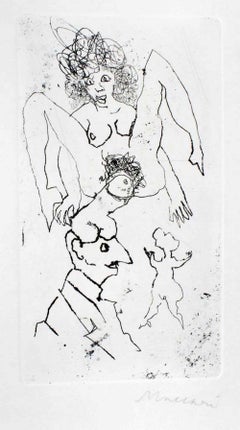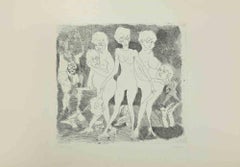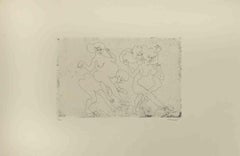Leszek RózgaHeads and a torso - Figurative drypoint print, Surrealist, Black & white2002
2002
About the Item
- Creator:Leszek Rózga (1924 - 2015, Polish)
- Creation Year:2002
- Dimensions:Height: 3.55 in (9 cm)Width: 3.35 in (8.5 cm)
- Medium:
- Movement & Style:
- Period:
- Condition:
- Gallery Location:Warsaw, PL
- Reference Number:Seller: 84541stDibs: LU101019030002
Leszek Rózga
Leszek Rózga was born March 18, 1924, in Zgierz. He studied painting at Maria Skarbek-Kruszewska private atelier in 1945–46. In 1948, Rózga began studies at the art school in Łódź in the studios of professors Władysław Strzemiński, Adam Rychtarski, Stefan Wegner and Ludwik Tyrowicz. Rózga graduated with a special award from the Academy of Fine Arts in Krakow in 1954. In 1958, he became a member of the Piąte Koło association, also known as Fifth Wheel. In 1967, Rózga began working in the field of graphics in Łódź. In 1971, he co-founded the Faculty of Graphic. In the 1970s, Polish etchings gained worldwide recognition because of artists like Rózga, whose works are in the collections of Albertina Museum in Vienna, in Bibliothèque Nationale de France and his etchings are in the collection of State Hermitage Museum in Petersburg. In 1979, Rózga received the title of professor. He created a series of colorful graphics inspired by travels and stories from his own life, sometimes bearing inspiration from Miró, Matisse and Picasso. Rózga passed away on July 15, 2015, in Łódź.
- ShippingRetrieving quote...Shipping from: Warsaw, Poland
- Return Policy
More From This Seller
View AllEarly 2000s Contemporary Figurative Prints
Paper, Drypoint
2010s Contemporary Figurative Prints
Paper, Crayon, Acrylic, Watercolor, Drypoint
2010s Contemporary Figurative Prints
Paper, Drypoint
21st Century and Contemporary Contemporary Figurative Prints
Paper, Etching
Early 2000s Contemporary Figurative Prints
Paper, Etching
2010s Contemporary Figurative Prints
Paper, Watercolor, Etching
You May Also Like
1960s Figurative Prints
Etching, Aquatint
Mid-20th Century Modern Figurative Prints
Paper, Drypoint, Etching
1990s Abstract Abstract Prints
Paper, Etching
Mid-20th Century Modern Figurative Prints
Paper, Drypoint, Etching
Mid-20th Century Surrealist Figurative Prints
Lithograph
1950s Surrealist Figurative Prints
Etching
